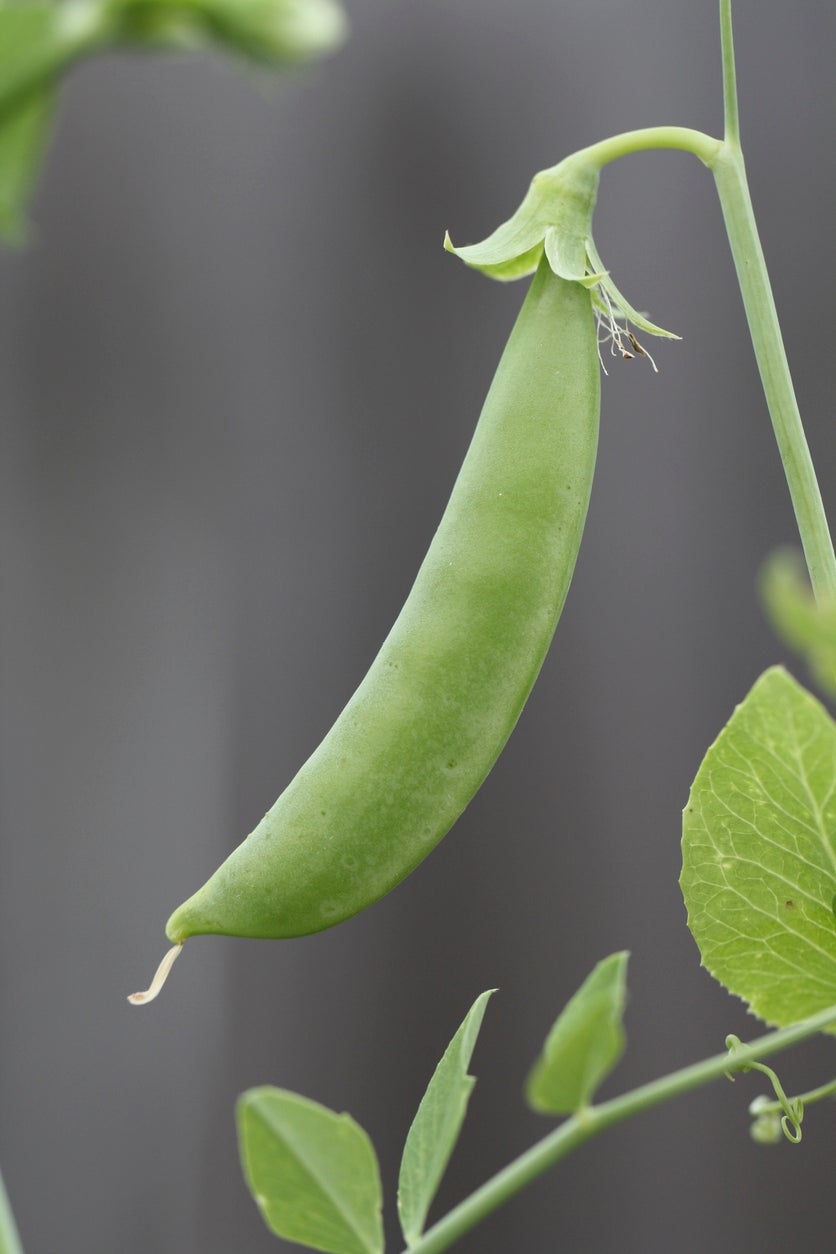What Are Sugar Ann Peas – How To Grow Sugar Ann Pea Plants


Sugar Ann snap peas are earlier than sugar snap by several weeks. Snap peas are wonderful because they produce a crunchy, chewable shell, making the whole pea edible. The sweet pods have a crisp snap and the plant produces copious quantities of them. Sugar Ann pea plants are easy to grow, low maintenance, and early season veggies. Continue reading for some tips on growing Sugar Ann peas.
Sugar Ann Pea Facts
Spring means the first vegetables of the season, and Sugar Ann pea plants are right at the top of the produce available. What are Sugar Ann peas? They are not shelling peas, since you eat the entire tasty pod. The pods are delicious fresh or cooked and add flair to salads, stir fries, and dunked in your favorite dip. Snap peas are the early birds of the growing season. Sugar Ann pea facts indicate that this variety will come 10 to 14 days ahead of the original Sugar Snap variety. From seed to table, you only have to wait 56 days. Sugar Ann is a string-less pea that was an All-American Selections winner in 1984. The pods are 3 inches long (7.5 cm.) and bright green. It is a vine type, but the vines are short and compact and rarely need staking. Snap peas are plumper and thicker than snow peas, with a pleasant bite. The little vines are also ornamentally attractive with pretty, white, classic, legume flowers and curling tendrils.
Growing Sugar Ann Peas
Snap peas couldn't be easier to grow. Sow seeds directly into a well-worked bed in early spring. You can also sow seeds late in the season for a fall crop in some regions. Expect germination in 6 to 10 days if you keep the soil moderately moist. Snap peas prefer cool temperatures. They will stop producing and vines will die when temperatures go above 75 degrees Fahrenheit (24 C.). The plants grow just 10 to 15 inches tall (25.5 to 38 cm.) and are fairly robust. They can even be grown in containers without needing a trellis or much support.
Care of Sugar Ann Snap Peas
Snap peas prefer full sun and soil that drains well. Before you plant, incorporate some well-rotted compost to enhance the nutrient content of the soil. Young plants may be bothered by cutworms, snails, and slugs. Place an empty toilet paper roll around the seedlings to protect them. Use slug bait or beer traps to minimize damage. Snap peas need to be kept moist but not soggy. Water when the surface of the soil is dry to the touch. Harvest peas when the pod is plump but not bumpy. These are marvelous vegetables with easy to grow simplicity and speedy production.
Gardening tips, videos, info and more delivered right to your inbox!
Sign up for the Gardening Know How newsletter today and receive a free copy of our e-book "How to Grow Delicious Tomatoes".

Bonnie Grant is a professional landscaper with a Certification in Urban Gardening. She has been gardening and writing for 15 years. A former professional chef, she has a passion for edible landscaping.
-
 Looking For Plants To Give You The Soft And Fuzzies? Try These 5 Fuzzy Leaf Plant Options
Looking For Plants To Give You The Soft And Fuzzies? Try These 5 Fuzzy Leaf Plant OptionsLovers of texture, drama, silver foliage and tactile plants will adore these special sensory garden additions. These fuzzy leaf plant options will leave you all aglow
By Susan Albert
-
 Get Ready For A Summer Of Hummers! Grow These Full Sun Hummingbird Plants and Flowers
Get Ready For A Summer Of Hummers! Grow These Full Sun Hummingbird Plants and FlowersIf you’re lucky enough to enjoy a sunny backyard, make sure you are maxing out on your pollinator opportunities and grow these full sun hummingbird plants and flowers
By Tonya Barnett